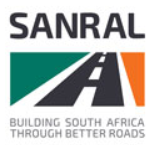Tom Tom Survey underscores GFIP contribution towards decongestion
A recent study comparing congestion between Cape Town and Johannesburg has underscored the contribution made by the Gauteng Freeway Improvement Project (GFIP) towards decongestion.
Stellenbosch University Department of Civil Engineering's Professor Christo Bester has applauded the South African National Roads Agency Limited (SANRAL) for alleviating traffic congestion in the Gauteng province through GFIP.
During an interview with 702 Talk Radio, Professor Bester said increased traffic congestion in South Africa's major cities has even resulted in travel times doubling between two points.
"In Johannesburg, Gauteng road users saw this before traffic lanes were expanded on Gauteng freeways. The more traffic lanes you have, the better the flow of traffic and the higher the capacity for vehicles on the road. That is the solution that SANRAL went for in Gauteng; they built more traffic lanes and they reduced congestion quite considerably. The result of course is that people travel much quicker," he said.
Professor Bester was responding to a recent Tom Tom Congestion Survey, which looked at the effects of traffic congestion on South Africa's major highways. "To ease congestion, an ideal situation in South Africa would be if every vehicle got tagged and road users would pay for transport facilities in terms of demand and supply. So if you want to travel during peak times, you pay more for using the road, and if you travel during off-peak times, you pay less for using the road," he says.
He also adds the money used to pay for the roads would ultimately assist in improving transport infrastructure and providing for better public transport.
Making reference to similar models in other parts of the world, Professor Bester says South Africans can optimally make use of intelligent traffic management systems such as the bus and taxi lanes found in Cape Town.
"We can move many vehicles in one lane because these are high occupancy vehicles. In America, for example, you have an idea of high occupancy toll lanes where you pay for driving on the one particular lane and you will arrive at your destination quicker and safer," he says.
During the same broadcast, Tom Tom Divisional Manager for Sub-Saharan Africa, Daan Hendricks, said travel times in Cape Town have increased exponentially: "What we have seen is that Cape Town has taken over Johannesburg to being the most congested city in the country. How we measure is we look at the actual travel time between peak periods in comparison to the travel times during free flow periods, and we express the difference in the percentage increase in travel time. What we have seen is that in Cape Town you need to add about 27% of your travel time.
"Of course, if you travel in the morning, then you need to add much more to your travel time. If you look at it on a yearly basis, if you commute for about 30 minutes per day, you will probably get stuck for about 89 hours in traffic, which is equal to about 11 working days," he says.
